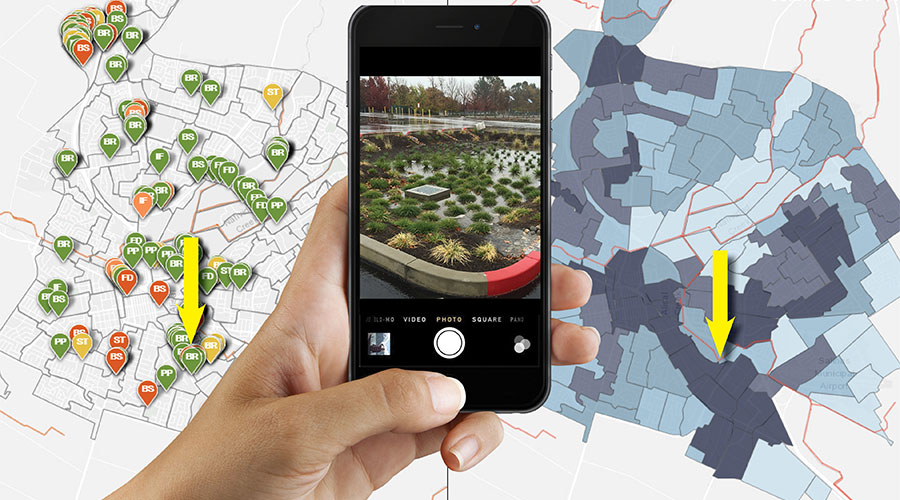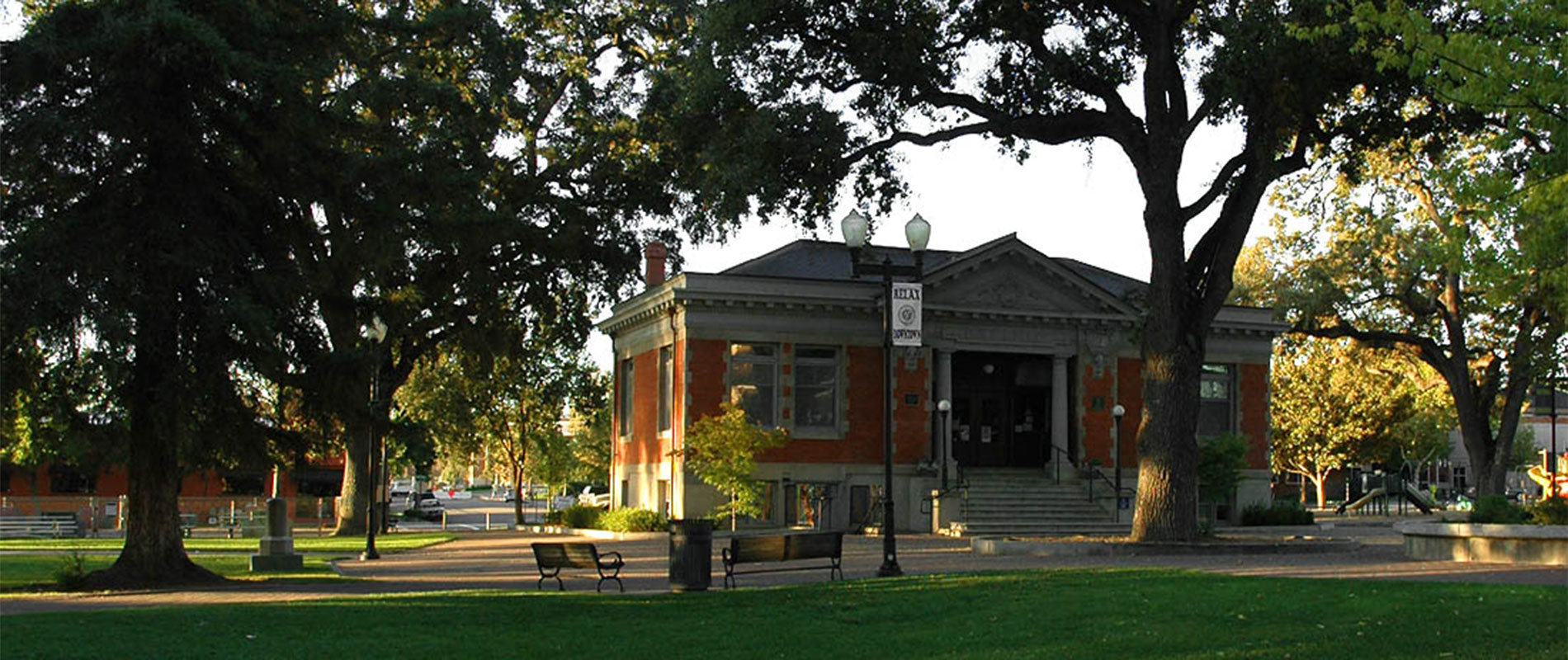With 2NFORM, Salinas, CA has reduced both the cost and complexity of all aspects of the city’s stormwater program. NPDES program manager Heidi Niggemeyer met with great success by developing a collaborating relationship with her regulators.
THE CLIENT
City of Salinas, CA
NPDES program manager Heidi Niggemeyer, CPSWQ
Located on the Central Coast of California, Salinas is primarily known for its prominent role in California’s agriculture and farming economy and the cornerstone of many Steinbeck novels. Salinas sits just inland from the Pacific Ocean and is surrounded by impaired waterways on the EPA 303(d) list and is required to reduce pollutant loading to address several TMDLs.
THE CHALLENGE
So Much Work, So Little Impact
Heidi Niggemeyer, NPDES Program Manager for Salinas, CA was grappling with several related challenges: how to comply with her MS4 permit, how to show progress made, and how to report compliance to her regulator so they could understand that progress.
Neither of these was easy. Many of the permit requirements were vague or required huge expenditures of resources to meet. Requirements from the past permit were so onerous that Salinas city leaders tried to argue that the expectations were unachievable, because water pollution came in from surrounding agricultural lands. The relationship between the city and the Central Coast Water Board was bitter and unproductive, which only made reporting more stressful. The annual report regularly took over 1,000 hours over three or four months, involved several city staff members to compile, and totalled over 2,500 pages.
“It was a huge effort,” Heidi says. “We were doing everything on paper, and all of the information was in different departments. Everyone was doing their own thing, interpreting the permit as they saw it, using their own language and terms, and there wasn’t any consistent, centralized method for demonstrating stormwater permit compliance.” Multiple teams generated and managed the data, and everyone stored their own data separately, on paper in file cabinets or in spreadsheets on individual computers. Just finding the required data was a challenge.
Creating the report was a huge resources sink, but worse: those long columns of numbers didn’t tell Heidi, or the state regulators, whether the waters in Salinas were getting any cleaner. Those 2,500 pages only provided evidence that the required sampling, inspections, and programmatic actions had taken place.
“I can feel confident that we’re using our limited resources in the most effective way possible.”
— Heidi Niggemeyer, NPDES Program Manager, Salinas
Heidi reached out to state regulators and started asking questions. Her first goal was to clarify the meaning of the MS4 permit at the time and specifically what it required of the City. Through better collaboration with the regulators, a new permit was issued in 2019, which made more sense. Together, she and regulators collaborated and began to build a productive relationship to understand the intent of specific requirements and what practical workflows and data collection would help the City meet these intentions of the regulations. Along with a better understanding of practical, feasible and concrete actions she and her team could take to comply with the regulations, Heidi began to chart a clearer path to efficiently track and demonstrate compliance.
Heidi turned a 2,500 page MS4 annual report into 30 pages her regulator loves. Here’s how.
Read moreHeidi, however, still needed a holistic solution to manage the City’s stormwater data and give visibility for all the work that goes into complying with the City’s MS4 permit. One that would help her standardize terminology and data collection formats, reduce errors and inefficiencies, improve collaboration and coordination, and fundamentally understand what was working and what wasn’t. With such a system, Heidi could use that data to evaluate the effectiveness of her program and strategically plan what investments of time and resources would pay off with the results she and state regulators were working toward: cleaner stormwater for Salinas.
Heidi turned to 2NFORM, a robust software platform that provides structured data intelligence for stormwater management and MS4 compliance.
OUR SOLUTION
A Better Approach, a Better Tool, a Better Relationship with Regulators
With 2NFORM, Salinas has reduced both the cost and complexity of all aspects of the city’s stormwater program. Today, not one element has remained untouched. The cloud-based software has enabled a digital transformation of the city’s MS4 compliance program, and the results are impressive.
Data Visualization Through Interactive Maps
2NFORM is map-based, built on Esri’s ArcGIS system, giving all of the stormwater team an easier way to collect and visualize the data required by their program. Every step in the process that Salinas uses for MS4 compliance is more efficient and more effective with 2NFORM, from collecting the data and organizing it to demonstrating compliance. Dozens of users who contribute data to the city’s stormwater program collaborate within this single solution. Data analysis has become possible in an entirely new way, allowing data-driven insights and mapped results to evaluate program needs and optimize improvements.
With 2NFORM, field teams with a few hours of training are capable of capturing the necessary data accurately and reliably, freeing management level team members to do other work. Using intuitive and repeatable field protocols, they enter data directly into their mobile devices. The data is now standardized, so it’s easy to compare apples to apples when analyzing the data. They can check results right in the field for better quality assurance and control. Entries sync to the 2NFORM central geospatial database, so that everyone who needs the information can access it in easy to use maps, charts, tables and summaries.
“We have a way of geospatially seeing the result of our inspections immediately,” Heidi says. “All the information is kept in one centralized location. It’s a huge help.” The analytics within 2NFORM turn data into actionable information. Now Heidi has city-wide ArcGIS maps that show her where stormwater program improvements are needed most.

Analytics Show Results of Pollution Load Reduction Plans
With peer reviewed science embedded in the solution, the analysis from 2NFORM provides a quantitative description of the city’s environmental accomplishments of pollutant load reduction progress. With these analytics, Salinas is able to track their urban contribution to pollutants in local waterways — separate from pollutants that enter the waterways from surrounding agricultural land. This is enormously important, because isolating Salinas’s pollution means that Heidi, and her regulators, can see how well the city’s pollutant load reduction plan is working, translating compliance into clean water outcomes.
This clean water accounting system is based on the combination of post-construction requirements, a street sweeping program, maintenance activities, and the presence and continued maintenance of Structural BMPs (SBMPs) that are all inventoried, inspected and maintained as part of her MS4 compliance program.These insights give Heidi the solid foundation she needs to communicate where improvements are needed to continue to manage a stormwater program that strives to meet clean water goals.
A Collaborative Relationship with Regulators
Over time, Heidi developed a collaborative relationship with her regulators. Dominic Roques, a now-retired water quality regulator for the state of California, worked closely with Heidi to refine her MS4 permit to eliminate busy work requirements while increasing focus on implementing a strategic plan and making progress on clean water goals. Dominic calls 2NFORM “visionary.”
“2NDNATURE has brought critical quantification and geospatial intelligence to advance watershed scale management of stormwater,” Dominic says. “And they are listening to what permittees say they need and what regulators say they want.”
Salinas has certainly seen the benefits that 2NFORM has brought to its program. Heidi can better educate her agency peers and city-wide divisions more on the benefits that resilient stormwater management can bring to the community. This approach opens many funding and financing opportunities. The benefits of improved stormwater management are far-ranging for Salinas.
Easier Annual Reporting
And that huge, time-consuming, expensive annual report? It’s no longer a burden. “It’s a lot easier,” Heidi says. “The data is already in the system, and 2NFORM summarizes our information. Now our annual report is only about 30 pages long and a simple “click” to submit. Our regulators like it, too.”
Best of all, “Now I can feel confident that we’re using our limited resources in the most effective way possible,” Heidi says. “I’m grateful to 2NDNATURE for the continued support they provide.”


